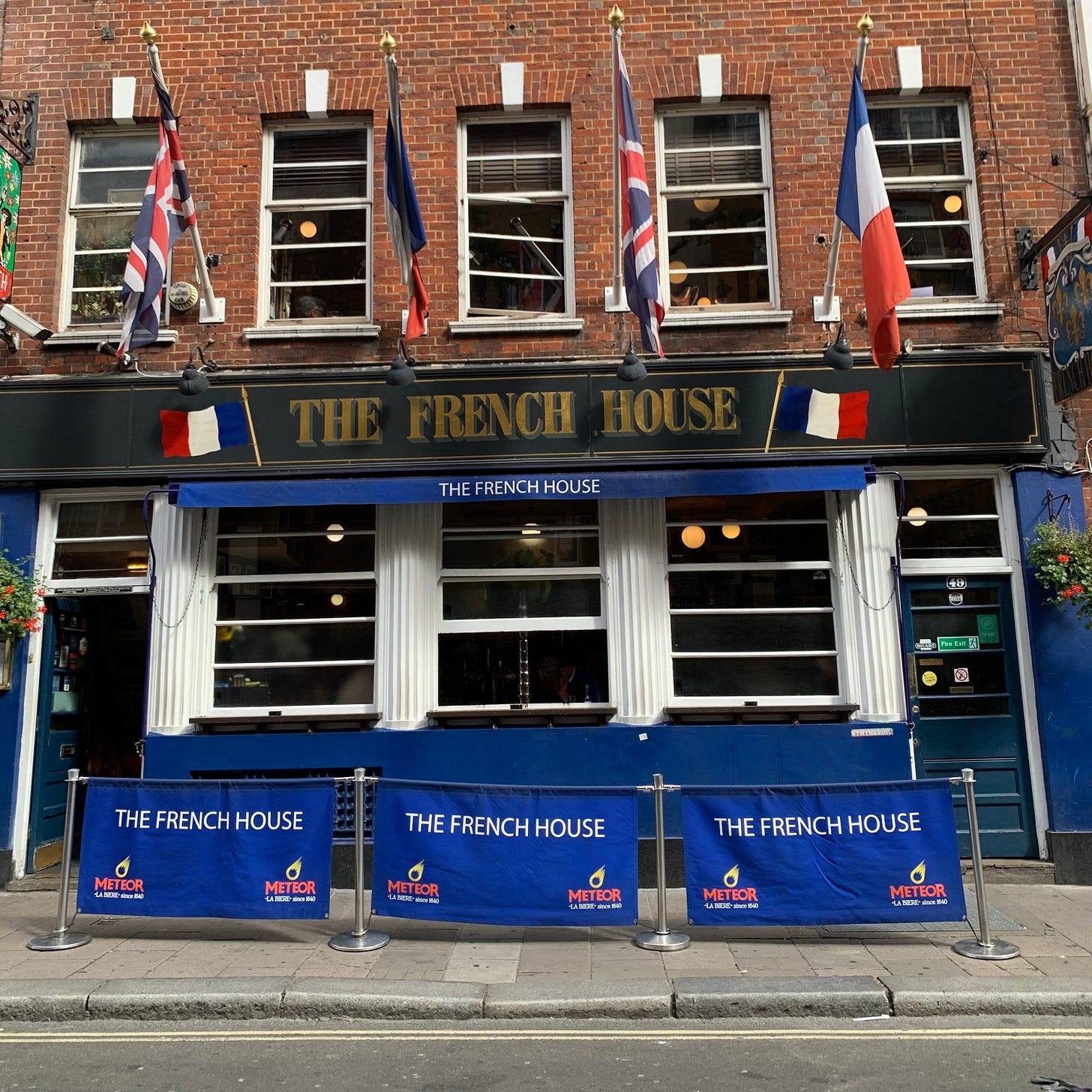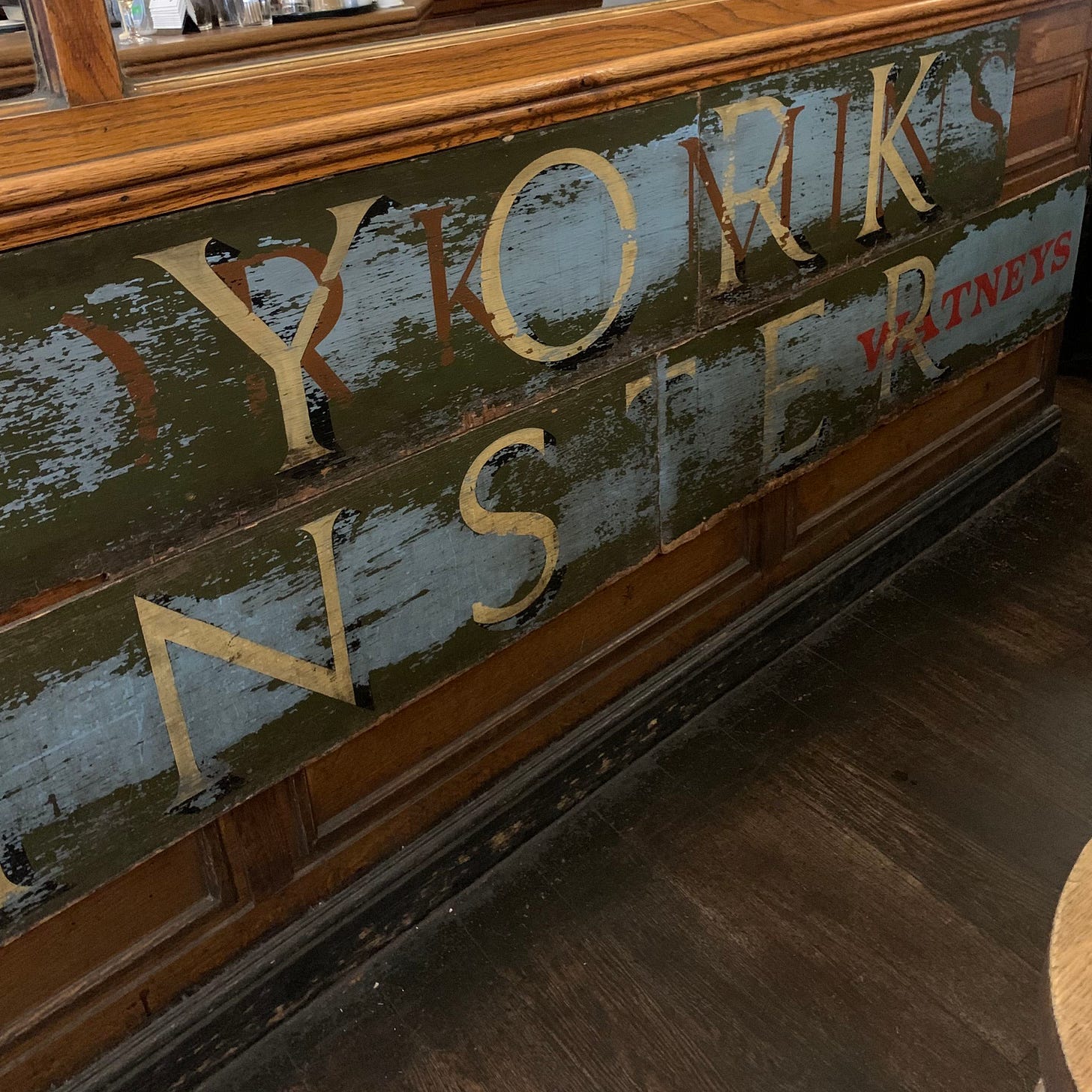Hello and welcome to Wooden City, a newsletter about London.
If you haven’t come here via @caffs_not_cafes, I'm a writer called Isaac Rangaswami and this is my Substack.
Every other week I publish an article about everyday places in London with unusual staying power, like shops, buildings, restaurants and public spaces.
Wooden City is a reader-supported publication and paid subscribers get much more. This includes access to maps, full articles and an archive of material covering over 190 places so far.
Usually I shy away from saying what’s “good” in any part of London. But the West End is so full of fake, overpriced and formulaic places that I’m happy to make an exception. I know I’m not alone in finding much of it simply bad.
Fragments of Soho shore up against this ruin, but forces such as Westminster City Council and the property industry have eroded this area’s historical reputation for affordability and diversity over the years.
More recently, two of central London’s most powerful landlords and developers merged into one. This cemented a process whereby new West End restaurants must prove themselves as palatable to investors and so end up being basically the same, a wider phenomenon Jonathan Nunn cogently describes as “Sohofication”.
I still enjoy going to Soho, but I wish I got to experience it during its heyday – or at least before its most iconic caffs closed. These days Soho has more chains and viral restaurants than it does specialist shops, but there are still groups fighting to protect its character. Chief among them is the Soho Society, which monitors licensing and planning applications, and organises the Soho Waiters’ Race, the main event of its joyous annual Village Fete.
Soho centres around entertainment, nightlife and work, but people live here as well. There’s a primary school, GP surgeries and even an Everyone Active with an ornate 1930s pool. There are eating places with history and personality left too, including more affordable spots like Bar Bruno, Bar Italia and Maison Bertaux.
There are also plenty of places to drink, some of which existed over a century before so much of Soho looked the same. The French House is my favourite of these historical pubs, because it’s fun, iconic and has a very distinctive vibe. It’s a rarity too, since so much boringness surrounds it. This is also why it’s permanently rammed.
As with other good pubs in Soho, visiting The French House often means standing outside, something the people I go drinking with don’t always want to do. This bothered me, until I remembered that I could go alone earlier in the day, when it’s easier to get a seat inside. A small luxury of being freelance.
Recently I’ve been doing just that, at The French House and three other iconic drinking spots. My primary goal has been to get a better sense of the goodness left in Soho, in places with a lot of history and atmosphere, where you also don’t feel shortchanged. By experiencing less busy versions of these Soho pubs, I wanted to uncover what makes them good, and the local crowds they still attract.
The French House
In the pub guide Back to the Local by Maurice Gorman, first published in 1948, the author describes a place on Dean Street called the York Minster, then only half a century old. He mentions the photographs of French boxers and cyclists on the walls, its moustachioed proprietor Victor Berlemont and the fact that French “is spoken freely on both sides of the bar.”
36 years after Gorman’s book, when monsieur Victor had been succeeded by his son Gaston, there was a fire in the pub’s holy namesake. Apparently 49 Dean Street started receiving donations for the cathedral’s restoration, so to avoid further confusion, it was officially renamed to a variation of what a lot of people knew it as anyway: The French House.




